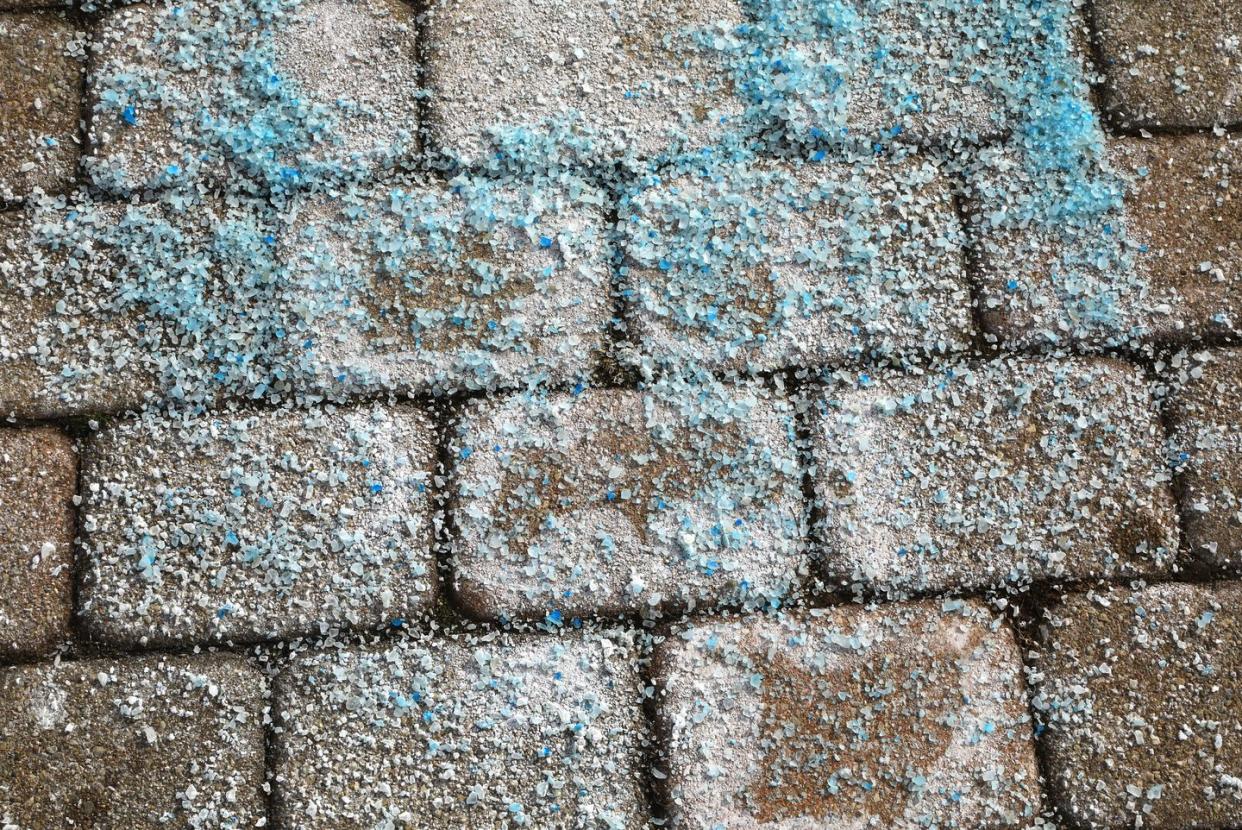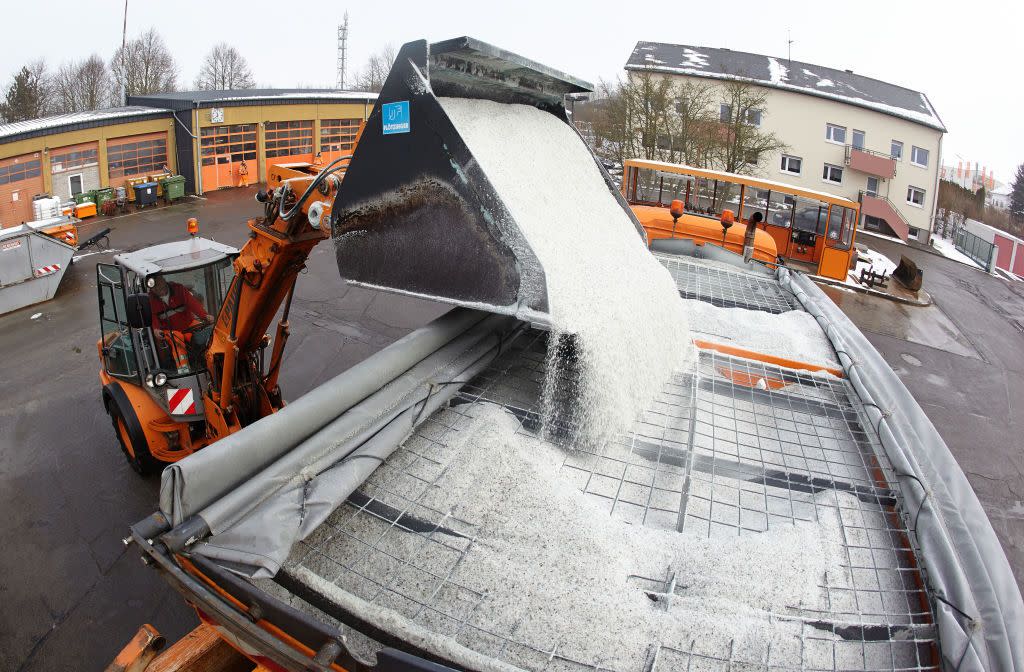Why salt melts ice — and how to use it on your sidewalk
Ice has a semi-liquid surface layer; When you mix salt onto that layer, it slowly lowers its melting point.
The more surface area salt can cover, the better the chances for melting ice.
Ice particle size can impact the speed of melting.
Road-salting season is upon us. With icy roads and walkways looming throughout winter—and late fall or early spring, depending on your relationship with the La Niña vs. El Niño climate patterns—salt does the heavy lifting to remediate those slippery hazards. But why does salt melt ice, you know, scientifically speaking?
❄️ Science explains the world around us. We’ll help you make sense of it all—join Pop Mech Pro.
Simply put: Salt lowers the freezing point of water. But there’s plenty more to it than that, so we consulted the experts.
Why Does Salt Melt Ice?
Let’s start with salt’s relationship with water. “We can say that any material that, like salt, dissolves in water can cause ice to melt,” Balakrishnan Viswanathan, a chemistry faculty member at Quest University in Squamish, Canada, tells Popular Mechanics. “This is generally quantified by saying that dissolving a substance reduces the vapor pressure of water.” A reduction in that vapor pressure lowers the freezing point, and “more salt leads to a greater depression of the melting point.”
Megan Ferguson, chair and associate professor of chemistry at the State University of New York at New Paltz, tells Popular Mechanics that a basic explanation is “that when salt dissolves in water, those dissolved particles get in the way of the crystal structures of ice forming.”
Anything dissolved in water can have the same effect of lowering the freezing temperature, but salt is used, Ferguson says, because when one unit of salt dissolves, it yields two to three particles per unit of salt. “So it’s a cheap and efficient way to lower the freezing temperature.”
When dealing with already formed ice, Viswanathan says the same explanation works, even if the process is different. “When you look at any frozen material, ice included, at temperatures slightly below the freezing point, there is a surface layer that behaves like a semi-liquid,” he explains. “It is mostly solid but has some flexibility to move.”

This surface layer of semi-liquid ice comes only a few molecules thick at the melting point, and has the ability to vibrate and rotate, although not as much as in a true liquid state. “When salt is added to this system, the ions in salt are attracted to the water molecules in [the surface semi-liquid layer],” Viswanathan says. “The ions on the surface of the salt get hydrated by the water molecules in the semi-liquid layer.” With the differing orientation, this causes the water molecules to separate from the surface layer and “to correct for the required thickness of the surface layer, as determined by the temperature, so more of the ice block melts to join the surface layer.”
How To Use Salt To Melt Ice More Efficiently
To accelerate the melt, increase the salt levels. “The more salt, the more the freezing point is lowered,” Julienne Stroeve, senior scientist at the National Snow and Ice Data Center at the University of Colorado, tells Popular Mechanics.
Surface area is the key when it comes to forcing melt more rapidly. “The speed depends on the contact surface area,” Viswanathan says. “If there is more surface in contact, the ice will melt more quickly. The total amount of ice that melts depends only on the mass of salt used.”
Similarly, to get an improved salt surface area, use smaller salt. “If you have two 1-pound bags of salt, but one bag has big crystals and the other has small crystals, the smaller crystals will melt ice faster,” Ferguson says. “This is because [the small crystals] have a greater surface area, so they can dissolve into that thin layer of water on top of the ice more readily.”
The more salt added, the greater the effect on the freezing point. So, if it is 28 degrees Fahrenheit outside, adding extra salt might not be needed as much as if, say, it was 20 degrees out. Ferguson also cautions that since most road salt ends up washed into nearby bodies of water, adding to the contamination, application levels should be carefully monitored.
The various colors of salt used generally don’t have a determining factor in the process, but Viswanathan notes that many road salts feature a color added separately, mainly to prevent ingestion and to improve visibility on the road.

Still, the dye used to color the salt does absorb complementary colors from sunlight. “Red or pink salts will absorb blue and green light from sunlight,” Viswanathan says. “Absorption of light by a dye causes a localized heating effect, which helps reduce the amount of salt needed to melt the ice.”
Since most sunlight is yellow, there’s not much difference between using blue or pink salts.
Mixed salts—not used commercially—can offer a different effect since they can be naturally colored without the use of dye. Depending on the nature of the ions in the mixed salt, they can offer synergistic effects on the melting process, allowing for the reduction in the amount of salt used and reducing the local waterway pollution burden.
The key in reducing your slick surface is to create a salty mix. “Once you have that layer of salty water on top,” Ferguson says, “it can lower the freezing temperature of the ice below.”
You Might Also Like
